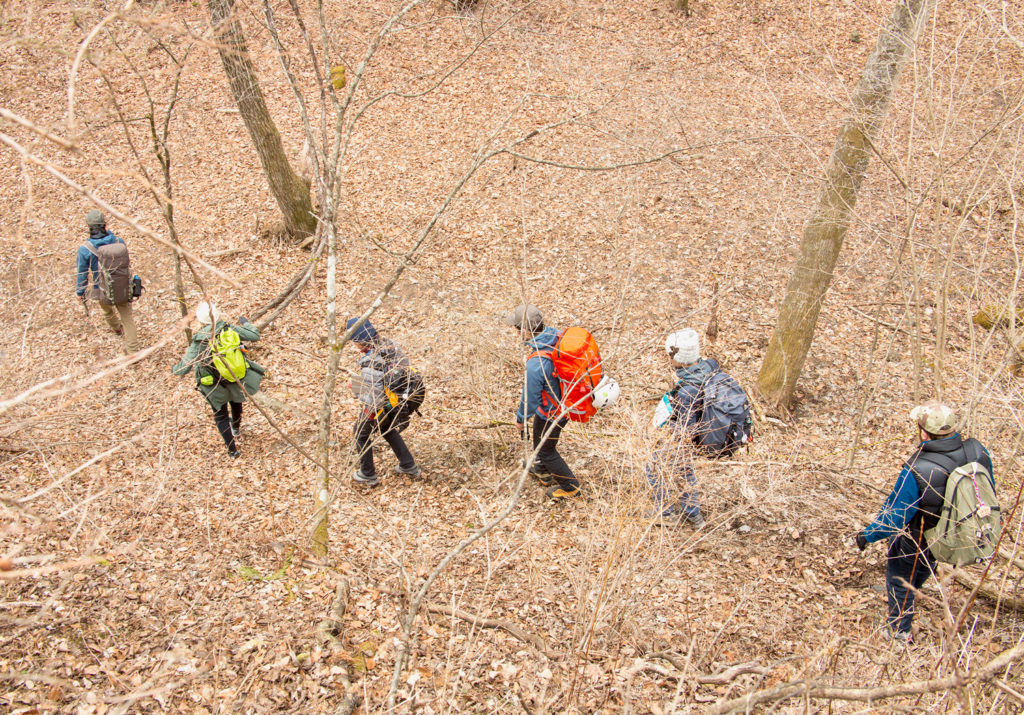A once-in-a-lifetime pilgrimage that captivated the masses
Fuji Worship is ancient, dating back to the Nara period. Fuji at that time was not a mountain to climb, but a mountain to revere from far away. Fuji, which was prone to violent eruptions at times, was believed to be inhabited by a deity named Konohanasakuya-hime who was so revered that humans could not easily approach the mountain. The ubiquitous altars for worshiping Fuji from afar are a testament to this. Toward the end of the Heian period, many mountain ascetic monks began to climb Mount Fuji and engage in rigorous ascetic training, perhaps under the influence of Buddhism. Further down the years, in the Muromachi period (1333-1573), ascetics began to take ordinary people to climb Mt.Fuji. To the folk of that time, Mt.Fuji constituted nothing less than the “other world.” They believed that climbing it and going to this other realm could lead to rebirth.
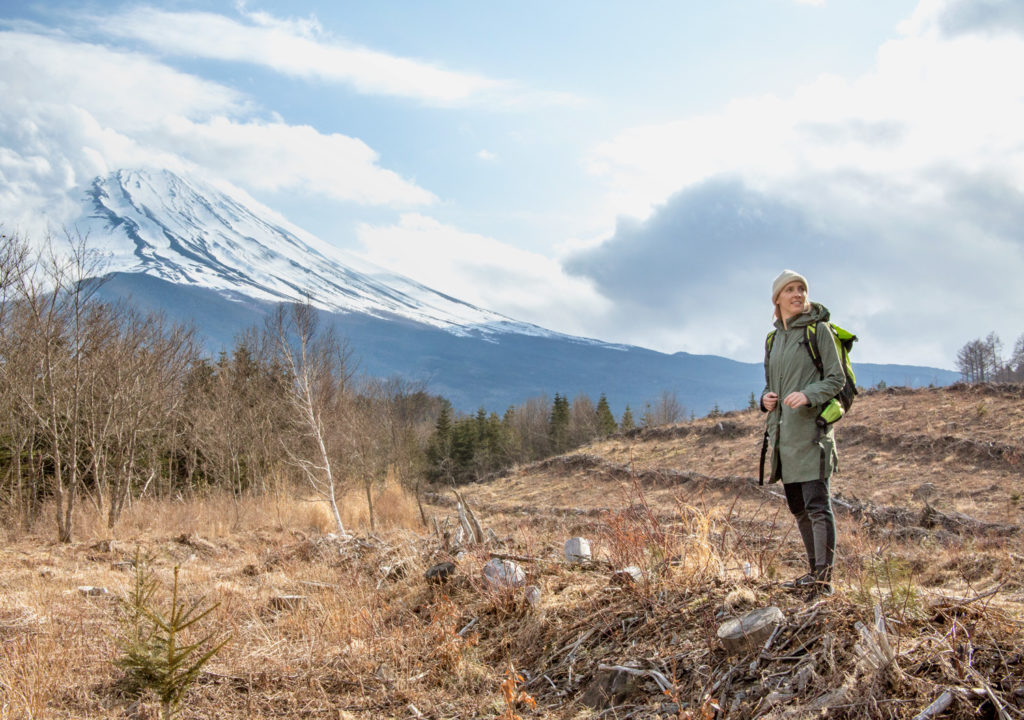
This notion gained traction further in the Edo period. The basis of the faith was the teachings of an ascetic named Hasegawa Kakugyo, who appeared at the end of the Warring States Period. In the latter half of the 17th century, his disciple Jikigyō Miroku further refined Kakugyō’s teachings and made them easy to grasp for the common people. Miroku’s teachings resonated with many people and spread explosively throughout the Kanto region. This marked the beginning of the great boom of Fuji worship by the common people, who formed a group called “Fuji-kō ” that flourished during the Edo era.
Climbing Mt.Fuji required a significant amount of money, but a system was devised whereby each member of a group accumulated funds for the trip, and the representative worshiper of the group was chosen by lottery, allowing many people to aim for the summit. At its zenith, it was said that “Edo is huge with 808 towns, and in each town 808 Fuji-kō”, drawing in as many as 80,000 worshipers. Each worshiper from the group would take the “Fuji-michi” from Nihonbashi in Edo (Tokyo) out to the holy peak. In those days when there was scarce entertainment, it is believed that those lucky to be chosen would go out with their best sake and food, enjoying the 3-4 day Fuji-michi to Yoshida stretch as if on an excursion.
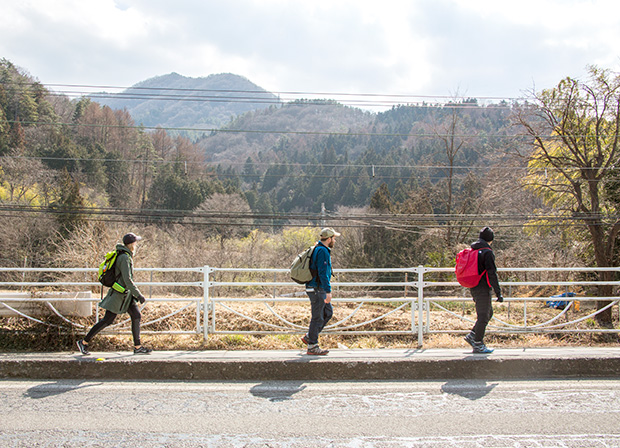
Joining PAPERSKY on this Fuji-Michi jaunt is Joanna Kawecki, who runs the culture magazine “Ala Champ.” Joanna, who has been based in Tokyo for the past four years and is a city dweller at heart, has viewed the sunrise at Mt.Fuji before. While at the time she was climbing the mountain simply as an activity, she decided to join us because she was interested in how Fuji worship entranced the common people of Edo, the theme of this trip.
Our journey begins in Ōtsuki Station. Originally, the route started in Nihonbashi along the Kōshu Kaidō road, and branched off at Ōtsuki to reach Fujiyoshida, but we are not going to cover the route to Ōtsuki this time. We depart from Ōtsuki Station and head south toward Ōtsuki Oiwake. Here, we immediately notice stone structures related to the Fuji faith. This Oiwake must have once been a critical point of ingress to Mt.Fuji. Along the way, we spotted a number of stone monuments and guideposts at points such as Oiwake and Deai.
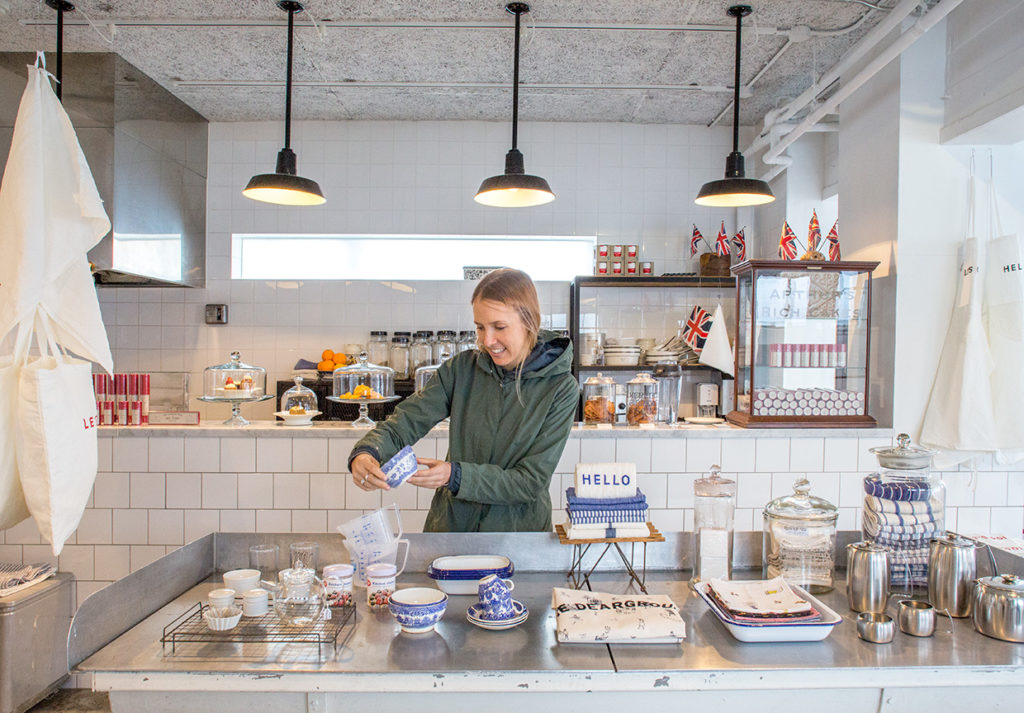
Passing through Tanimura, a former post station on the Fuji Road, the road eventually leads to Shimoyoshida. In Yoshida, “Oshi Machi” was the site of a major center of worship. This was the upper part of the town, while lower Yoshida was a bustling merchant town. Descending further southwest from Shimo-Yoshida, one finally reaches Kamiyoshida.
In Kamiyoshida during the Edo period, there was row upon row of Oshi dwellings, which were indispensable to the Fuji-kō worship groups. “Oshi” were the head priests of Sengen Shrine and proprietors of the lodgings; they were in fact travel coordinators who arranged everything related to the ascetic’s ascent including meals, lodging, and bento boxes. While Oshi towns were founded at each of the entrances to Mt. Fuji, Yoshida attracted the largest number of pilgrims during the Edo period. In its heyday, there were some who bedded down in the corridors as the rooms were completely full. Perhaps not much different from the hut at the 8th station of Mt.Fuji today.
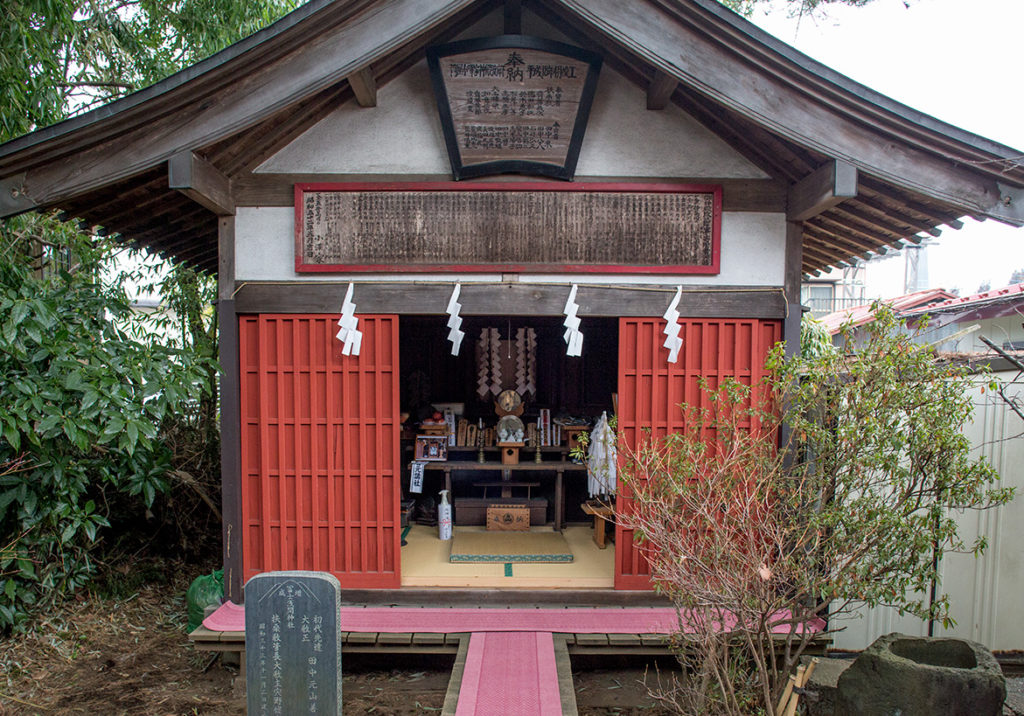
On the first night, we were taken care of at “Tsutsuya “, an Oshi residence that is still in operation as a guest house. Oshi dwellings are typically tucked away from the main street, with a stream running in front of the entrance for the pilgrims to perform “misogi” (rituals of purification.) Every Oshi dwelling has a “kami-zen-no-ma” where the god of Sengen Shrine is venerated, but the kami-zen at Tsutsuya is unusually located in a storehouse away from the house. Before departing, pilgrims pray here for the safety of their journey to the Oshi.
For dinner, we are treated to the famed Goshi cuisine. Oshi-ryori is a dish served to ascetic who are preparing to ascend Mt.Fuji. It is hearty, to provide stamina for the climb ahead. “However, we don’t serve four-legged animals because they are thought to ‘carry impurity,'” explains our host. Instead, Yoshida inns often cooked and served carp from their ponds.

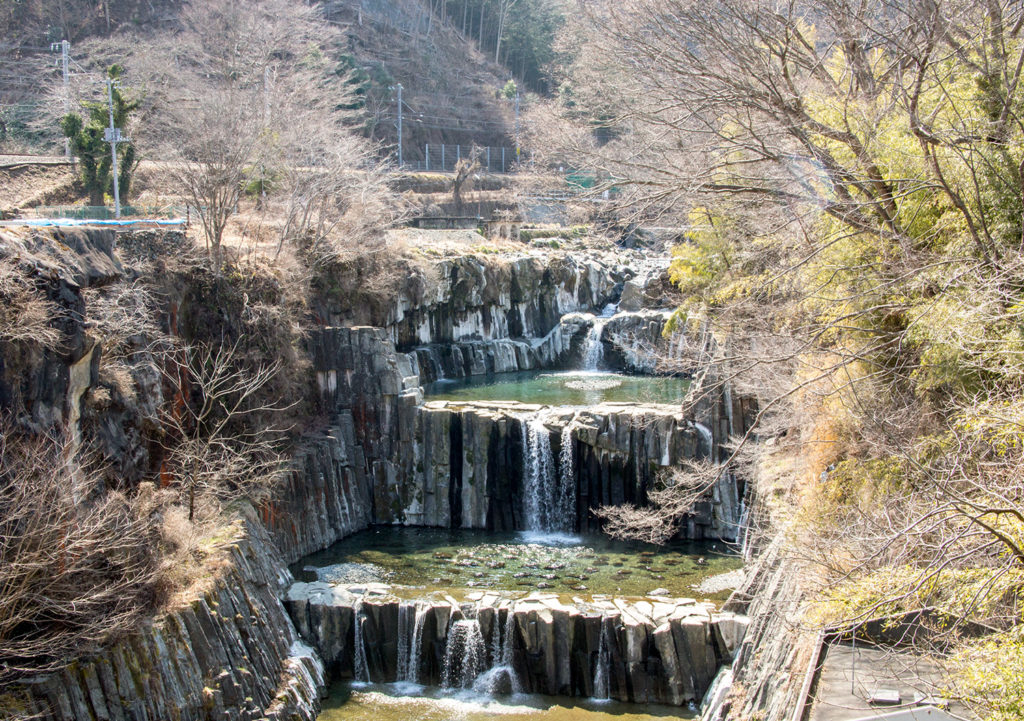
The next day, we visit Fuji-kō spots in Yoshida. First, the Fuji-san Museum which displays exhibits related to the Fuji faith, making full use of projection mapping and the latest video technology. The explanatory panels and videos are also displayed in English, so Joanna was able to get some insights into the Japanese view of Mt.Fuji.
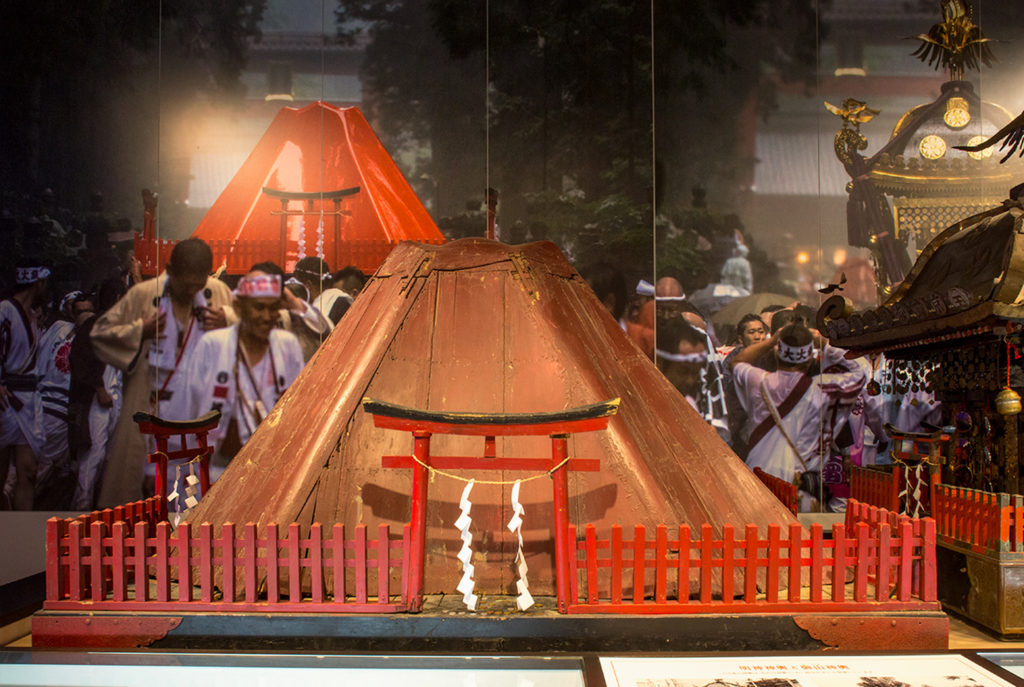
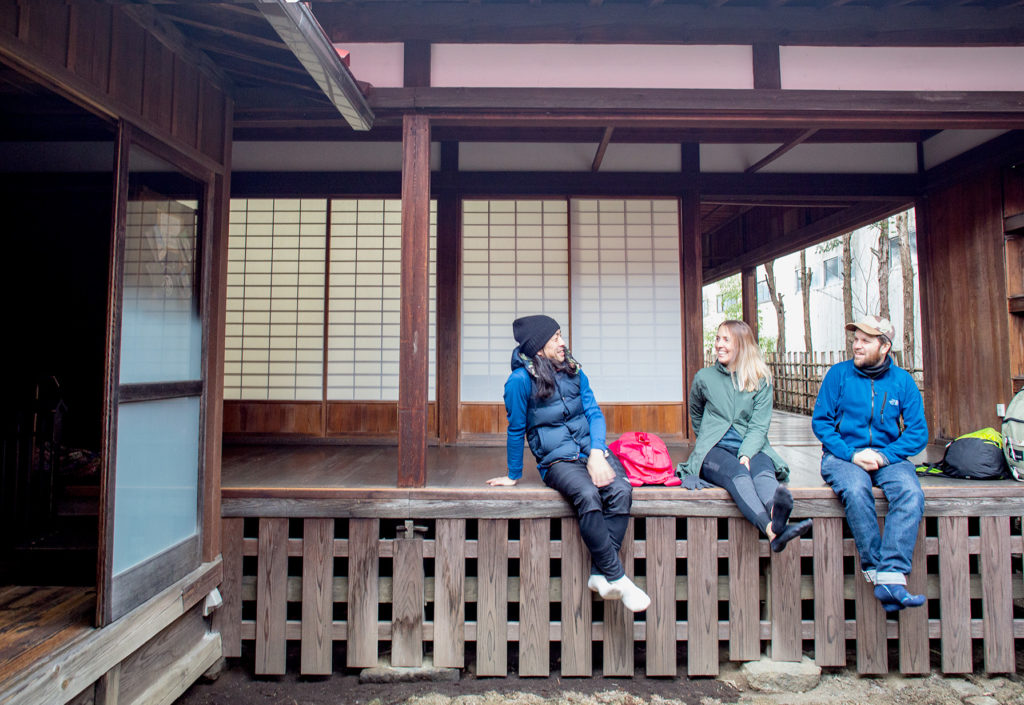
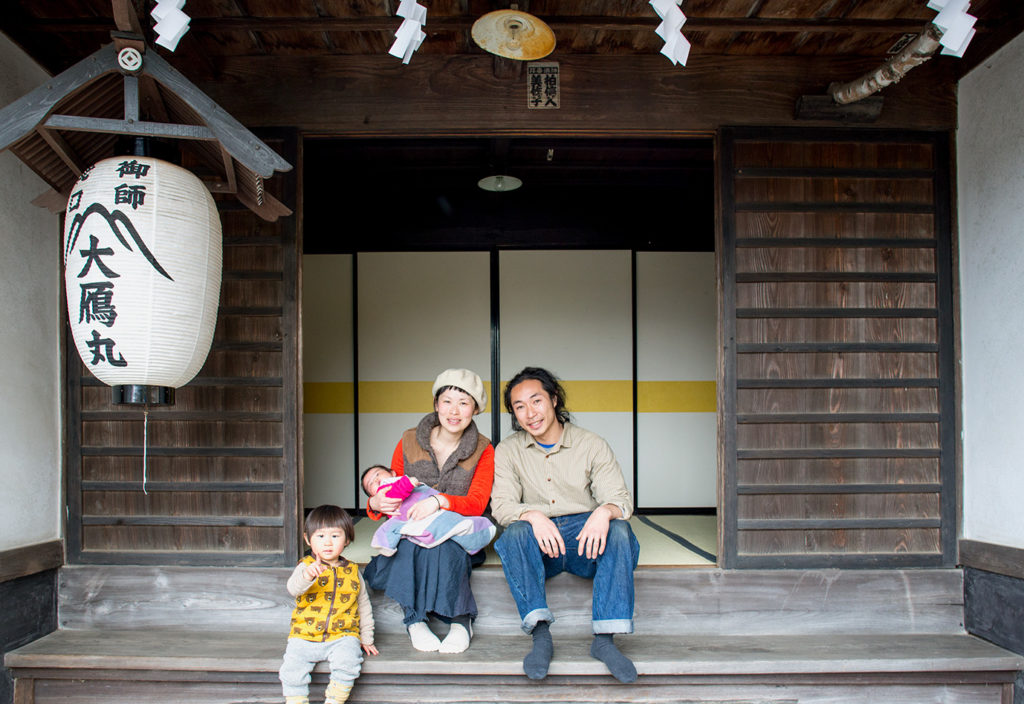
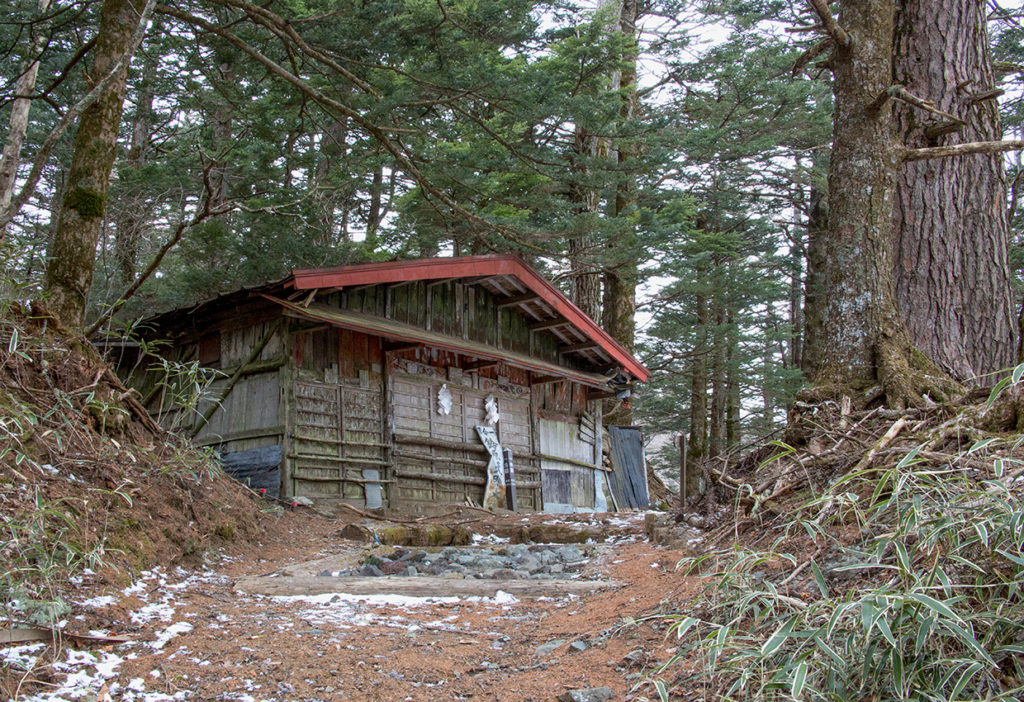
Next up, guides Yasuhiko Ota and Atsuaki Sato of the Yoshida Trail Club will take us to the “Yoshida Lava Tree Molds,” which is designated as a national natural monument. The cave was hewn by lava 1,100 years ago, and the complex tree formations created by the overlapping of trees were symbolized as the womb of a woman, which led to a religious belief in the womb. Enshrined in the cave are Konohanasakuya-hime and Jikigyō Miroku, the sacred deities of Mt.Fuji.
“From ancient times, followers of the faith would visit here the day before ascending the peak to pray as they made their way around the cave,” explains Ota-san.” We also headed to another sacred place, the Senzui spring water source. Although it is now dried up, it used to be a bustling misogi (purification) site close to the trailhead. There are many such sacred water spots scattered around Mt.Fuji.
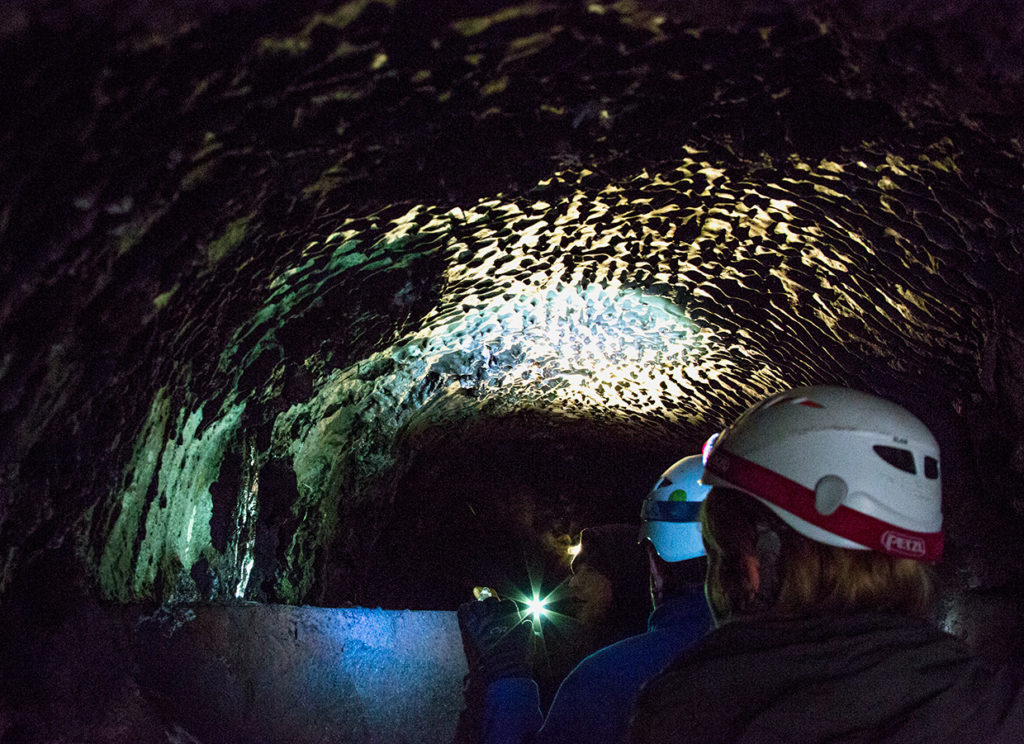
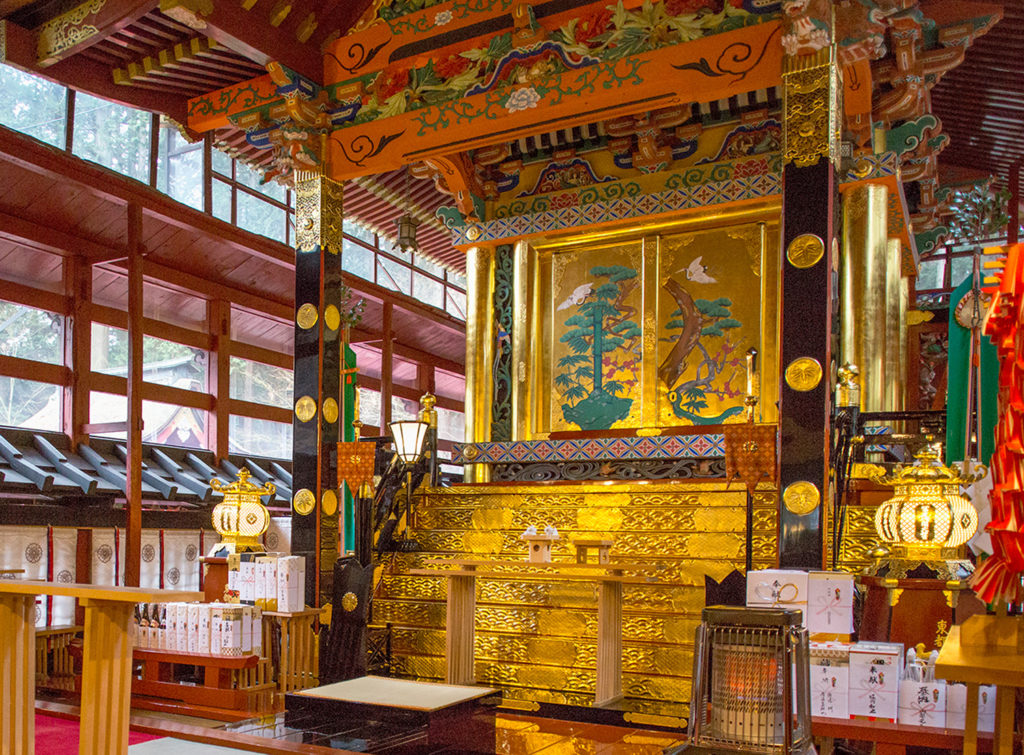
On Day 3, we finally reach the fifth station on Mt.Fuji. After a prayer at the Kitaguchi Hongu Fuji Sengen Shrine, we headed for the fifth station from the Yoshida-guchi trail. It is the only one of the many trails that can be climbed from the first station to the summit it its original state. The trail is lined with numerous misogi (purification) sites, shrines, and teahouses that tell the story of the once thriving Fuji-kō community. Joanna was excited to see the trail, which was dotted with decaying worship halls and teahouses in the virgin larch and Japanese boxwood forests still covered with deep snow, which seemed a world apart from the trail from the fifth station onward. In our spiked hiking shoes, we enjoyed the ancient paths of the World Heritage site.
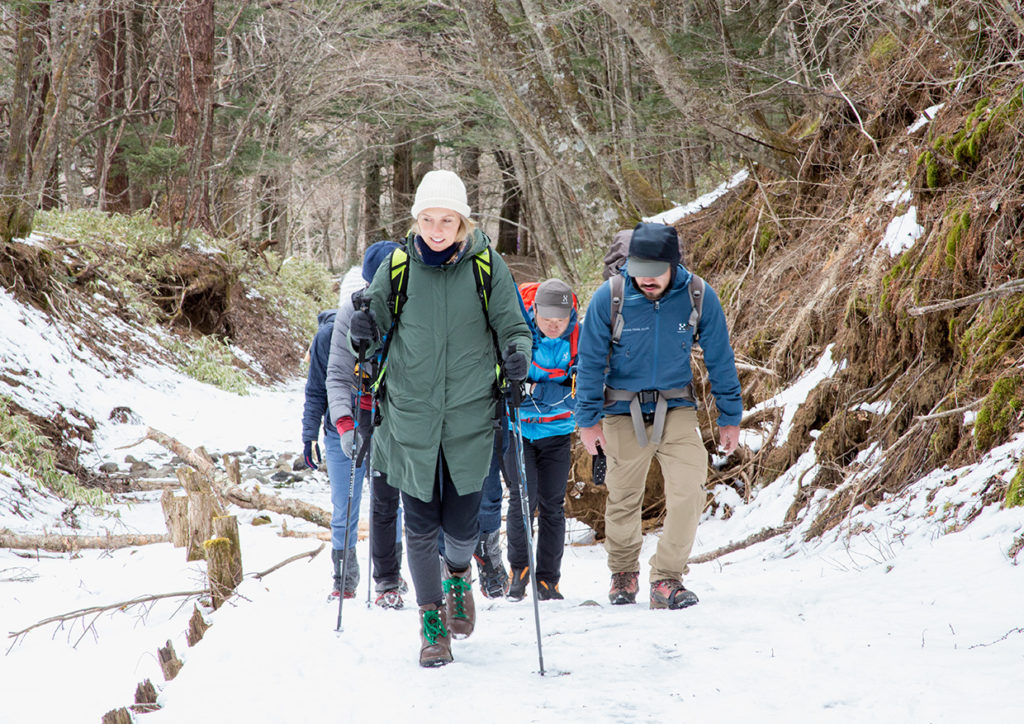
“I felt in the presence of the divine as I plodded along the path from the foot of the mountain to the summit. I guess it is just as meaningful now as it was in the past to climb the biggest mountain in Japan while appreciating its size.”
Joanna spoke for all of us in declaring her desire to repeat the three-day, two-night walk from the foot of the mountain to its summit. What indeed could top a trip to a sacred place in the sky following in the footsteps of Edo period pilgrims?
